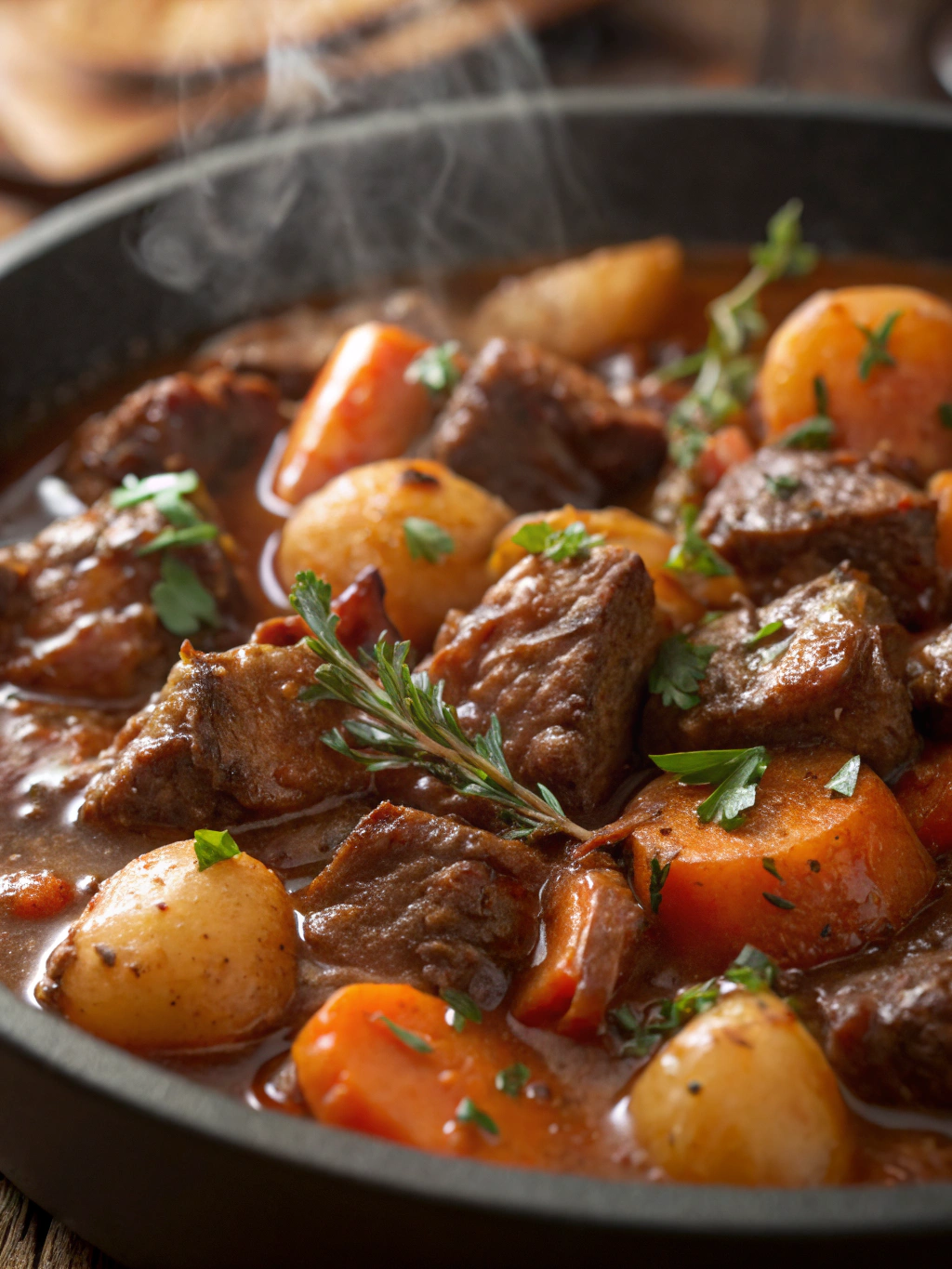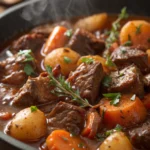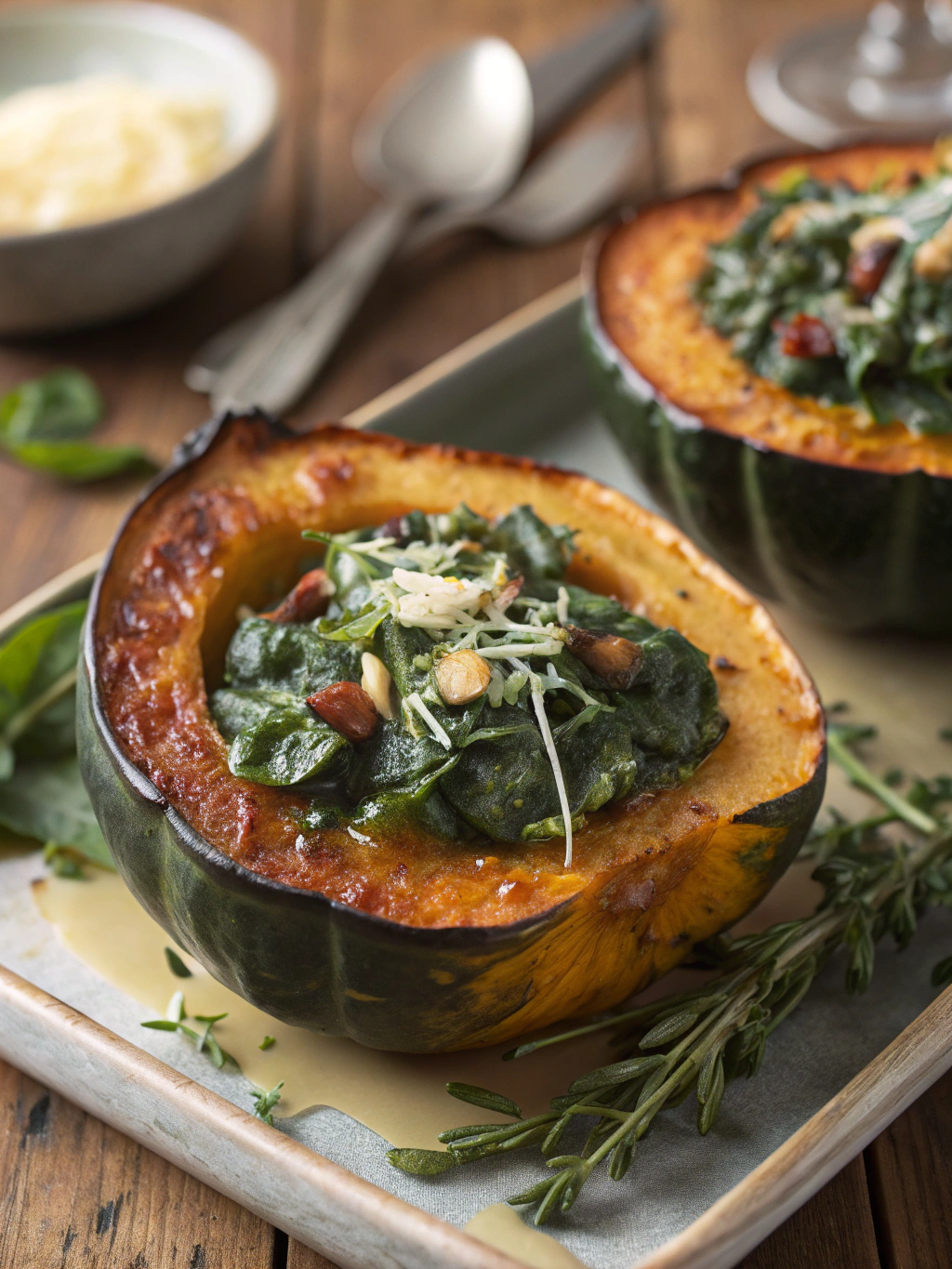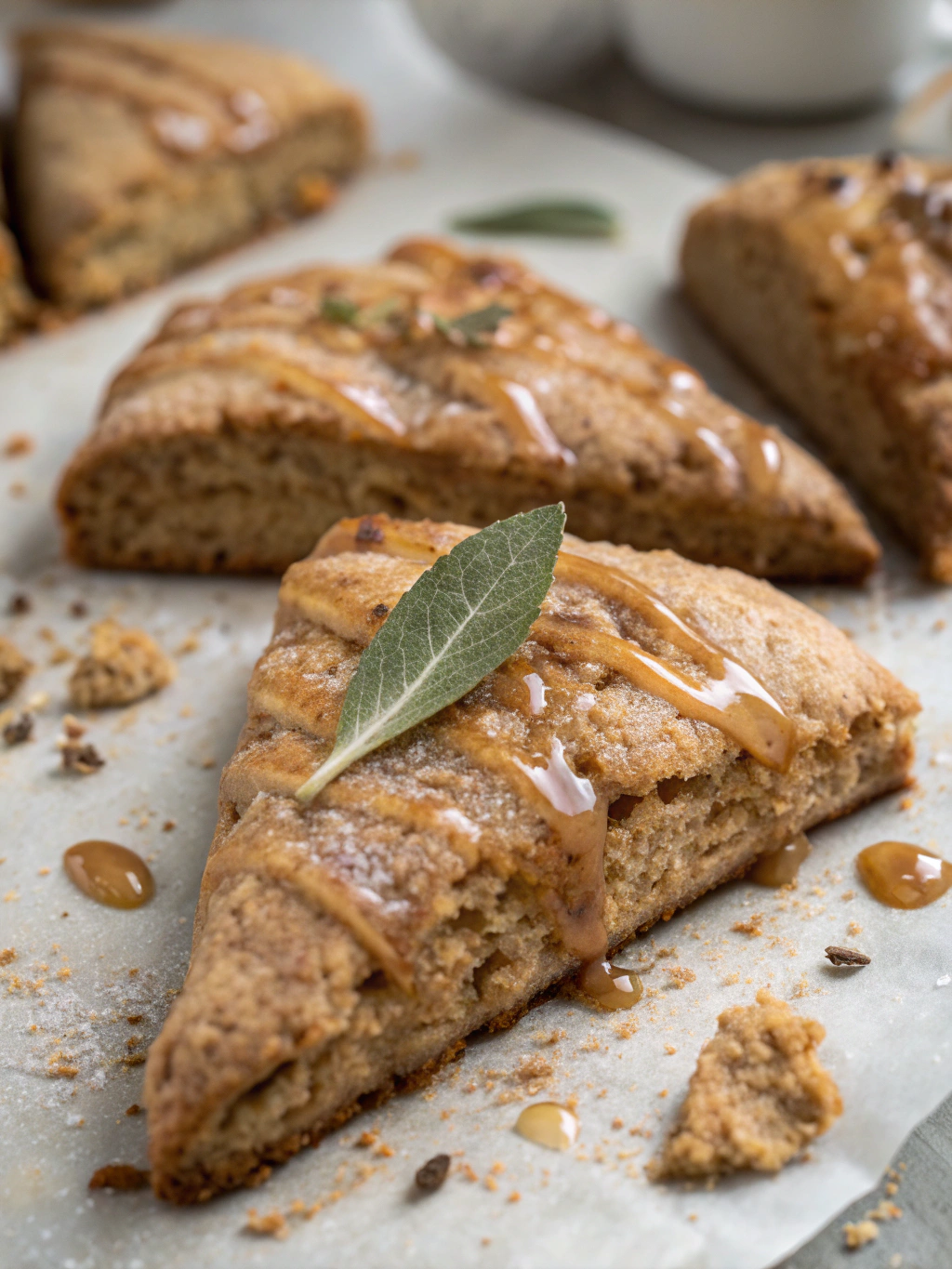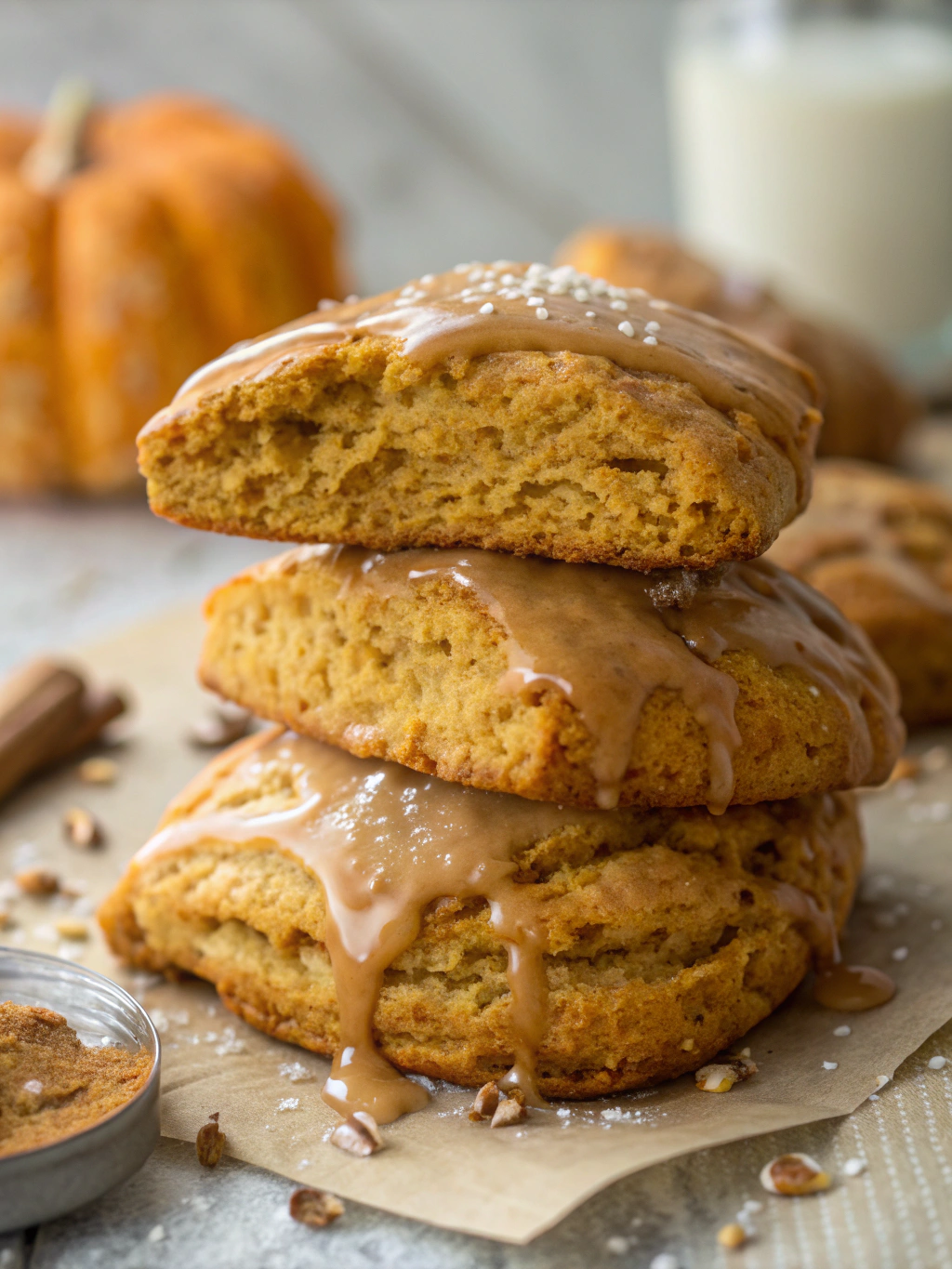Did you know that 78% of people believe a truly great beef stew takes all day to make, but what if I told you that the secret isn’t time, but patience?
It’s a truth I held onto myself for years, watching the frost gather on the windowpane and thinking a proper, soul-warming stew was a weekend project. But then I learned that the magic of a classic beef stew recipe isn’t about the clock ticking away; it’s about the gentle, unhurried moments. It’s about the sizzle of the beef meeting the hot pot, the quiet bubble of the broth as it coaxes flavor from the vegetables, and the patience to let it all become something greater than the sum of its parts.
There’s a particular kind of alchemy that happens in a Dutch oven on a chilly afternoon. It’s a feeling I chase every autumn, when the light turns golden and the air gets that crisp bite. This hearty and comforting beef stew is my edible security blanket. It’s the dish I make when I need to feed not just hungry stomachs, but hungry hearts. It’s the recipe I learned from my grandmother, who never measured a thing but always knew exactly when it was “just right.”
I remember one November, the first real cold snap of the year had settled in, and my little kitchen felt like the warmest, safest place in the world. The rich, savory scent of seared meat and onions filled the house, promising a reward for our patience. That’s the true beauty of this dish—the anticipation is part of the nourishment. It teaches you to slow down, to appreciate the process, and to understand that some of the best things in life, the most hearty and comforting things, can’t be rushed.
PrintClassic Beef Stew
A hearty and comforting beef stew with tender chunks of beef, carrots, potatoes, and peas in a rich, savory broth.
- Author: Dorothy Miler
- Prep Time: 15 minutes
- Cook Time: 2 hours
- Total Time: 2 hours 15 minutes
- Yield: 6 1x
- Method: Main
- Cuisine: American
Ingredients
- 2 lbs beef chuck, cut into 1-inch cubes
- 2 tbsp olive oil
- 1 large onion, chopped
- 3 cloves garlic, minced
- 4 cups beef broth
- 1 cup red wine (optional)
- 4 carrots, peeled and sliced
- 3 potatoes, peeled and cubed
- 1 cup frozen peas
- 2 tbsp tomato paste
- 1 tsp thyme
- 1 bay leaf
- Salt and pepper to taste
Instructions
- Season beef with salt and pepper. In a large pot, heat olive oil over medium-high heat and brown beef in batches. Remove and set aside.
- In the same pot, sauté onion until soft, then add garlic and cook for 1 minute. Stir in tomato paste.
- Return beef to the pot. Add beef broth, red wine (if using), thyme, and bay leaf. Bring to a boil, then reduce heat, cover, and simmer for 1.5 hours.
- Add carrots and potatoes, and continue simmering for 30 minutes or until vegetables are tender.
- Stir in peas and cook for 5 more minutes. Remove bay leaf before serving.
Notes
You can customize the seasonings to taste.
Nutrition
- Serving Size: 1 bowl
- Calories: 450
- Sugar: 8g
- Fat: 18g
- Carbohydrates: 30g
- Protein: 35g
The Ingredients: A Symphony of Comfort
Gathering these ingredients is like gathering old friends. Each one plays a crucial part in building the deep, soul-warming flavor we’re after. Don’t be shy with the herbs—they’re the secret handshake of a truly great stew.
- 2 ½ pounds beef chuck roast, cut into 1 ½-inch cubes. Look for a cut with beautiful marbling; that fat will slowly render and make the meat incredibly tender.
- 2 tablespoons olive oil, for browning. A good glug in the bottom of your pot.
- 1 large yellow onion, roughly chopped. The sweet, humble foundation of so many good things.
- 4 cloves garlic, minced. Because is it even a stew without that gorgeous aroma filling the kitchen?
- ¼ cup all-purpose flour. Our trusty tool for thickening and creating that perfect gravy.
- 1 cup dry red wine, like a Cabernet Sauvignon. This adds a wonderful depth of flavor that you just can’t get from anything else. (Don’t worry, the alcohol cooks off, leaving only its rich essence behind!)
- 4 cups beef stock. Use a good quality stock, it makes all the difference.
- 2 tablespoons tomato paste. A little tube of umami magic that adds a touch of sweetness and color.
- 1 tablespoon Worcestershire sauce. Our secret savory weapon.
- 1 ½ teaspoons dried thyme & 2 bay leaves. The herbal soul of the stew.
- 1 ½ pounds Yukon Gold potatoes, peeled and cut into chunks. They hold their shape beautifully and have a buttery texture.
- 4 large carrots, cut into 1-inch pieces. For that classic sweetness and pop of color.
- 3 celery stalks, cut into 1-inch pieces. Don’t skip these! They add a subtle, savory note.
- 1 cup frozen peas. We’ll add these right at the end for a burst of fresh green.
- Kosher salt and freshly ground black pepper, to taste. Season confidently at every stage!
Let’s Get Cooking: Building the Foundation
This is where the magic begins. Put on your favorite cozy sweater, maybe pour a little of that red wine for yourself, and let’s create something wonderful.
Step 1: Brown the Beef. Pat your beef cubes completely dry with paper towels—this is the single most important tip for getting a proper sear, not a steam! Generously season them with salt and pepper. Heat the olive oil in a large, heavy-bottomed Dutch oven over medium-high heat. Working in batches to avoid crowding the pan, add the beef and sear on all sides until a deep, brown crust forms. This isn’t just for color; it’s for building immense flavor. Transfer the browned beef to a clean plate and set aside.
Step 2: Sauté the Aromatics. Reduce the heat to medium. In the same pot, with all those beautiful beefy bits still in there, add the chopped onion. Sauté for about 5 minutes until it becomes soft and translucent. Add the garlic and cook for just one more minute, until fragrant. You’ll want to lean in and breathe it all in.
Step 3: Create the Base. Sprinkle the flour over the onion and garlic mixture. Stir constantly and cook for about a minute to get rid of that raw flour taste. This is going to help thicken our stew beautifully. Now, pour in the red wine, using your wooden spoon to scrape up all those browned bits from the bottom of the pot. Let it simmer for 2-3 minutes, allowing it to reduce slightly. Then, stir in the tomato paste, Worcestershire sauce, and dried thyme.
Step 4: Simmer and Wait. Return the browned beef and any accumulated juices back to the pot. Pour in the beef stock and add the bay leaves. Bring everything to a gentle boil, then immediately reduce the heat to low. Cover the pot with a lid, but leave it slightly ajar. Now, my dear, we practice patience. Let it simmer gently for 1 ½ hours. The low and slow heat is what will transform that tough cut of beef into something spoon-tender.

Pro Tips, Variations, and Substitutions
Every cook has their own little secret for the perfect stew, and I encourage you to make this recipe your own. Here are a few ideas to get you started.
- For a Richer Flavor: Don’t be shy with the tomato paste! Let it cook for a full minute in the pot until it darkens slightly. This simple step deepens the entire flavor profile of the stew.
- Wine Lover’s Twist: Deglaze the pot with a full cup of dry red wine (like a Cabernet Sauvignon or Pinot Noir) after browning the beef. Let it reduce by half before adding the broth. It adds a wonderful complexity.
- Gluten-Free: This recipe is easily made gluten-free by using a 1:1 gluten-free flour blend for dusting the beef. The result is just as delicious.
- Vegetable Swaps: Feel free to use what you have! Parsnips, sweet potatoes, or even mushrooms make wonderful additions or substitutions for the classic vegetables.
The Perfect Pairings: What to Serve With Your Stew
A bowl of this hearty beef stew is a meal all on its own, but a few well-chosen sides can turn it into a feast for the senses.
My absolute must-have is a thick slice of crusty, buttered bread or a fluffy buttermilk biscuit for sopping up every last bit of that glorious gravy. For a lighter option, a simple green salad with a sharp vinaigrette provides a refreshing contrast to the rich, savory stew. And on a truly chilly evening, a side of creamy mashed potatoes or buttery egg noodles makes for the ultimate comfort food combination.
More Than Just a Meal: The Benefits of Homemade Stew
This beef stew does more than just fill your belly; it nourishes your soul and your home.
First, it’s a fantastic make-ahead meal. In fact, it’s even better the next day after the flavors have had more time to meld together beautifully. It also freezes wonderfully, making it a lifesaver for busy weeks. Secondly, it’s packed with wholesome, recognizable ingredients. You control the sodium, the quality of the beef, and the freshness of the vegetables. Finally, the process itself is a form of therapy. The slow, gentle simmer fills your house with an aroma that is the very definition of comfort, creating a warm and welcoming atmosphere for everyone who walks through the door.
Real-Life Tips from My Kitchen to Yours
After making this stew more times than I can count, I’ve learned a few tricks that make all the difference.
- Pat Your Beef Dry: Before dredging the beef cubes in flour, pat them thoroughly dry with a paper towel. This is the secret to getting a perfect, golden-brown sear instead of steaming the meat.
- Don’t Crowd the Pan: Brown the beef in batches. Overcrowding the pot will cause the temperature to drop and the meat will release its juices, leading to a boil instead of a sear. Be patient—it’s worth it for that flavor foundation.
- Embrace the Simmer: A gentle simmer is key. A rolling boil will make the beef tough. You want to see just a few lazy bubbles breaking the surface. Let time and low heat work their magic to tenderize the meat.
- Skim the Fat: If you have time, let the finished stew cool for a bit and skim off any excess fat that rises to the top. It makes for a cleaner, brighter flavor and a more beautiful presentation.
I hope this recipe finds its way into your regular rotation and becomes a cherished tradition in your home, just as it is in mine. Happy cooking!

Conclusion
This classic beef stew is more than just a meal; it’s a warm, comforting embrace in a bowl. We’ve walked through selecting the best chuck roast, building a rich, savory base with tomato paste and red wine, and the magic of low-and-slow cooking that transforms simple ingredients into something truly special. The result is a deeply flavorful, fall-apart tender stew that’s perfect for a cozy night in and even better as leftovers the next day.
I truly hope this recipe becomes a cherished favorite in your home, just as it is in mine. There’s nothing I love more than hearing from you! Did you add a secret ingredient? How did your family like it? Please share your thoughts and photos in the comments below. And if you’re looking for more comforting dishes to warm your soul, be sure to explore our collection of hearty recipes right here.
FAQs
Can I make this beef stew in a slow cooker?
Absolutely! This recipe adapts beautifully to a slow cooker. Simply follow the steps for browning the beef and sautéing the vegetables in a skillet. Then, transfer everything to your slow cooker, add the broth and seasonings, and cook on low for 7-8 hours or on high for 4-5 hours. Add the peas and parsley in the last 30 minutes of cooking.
My stew is too thin. How can I thicken it?
No problem! The easiest way is to create a slurry. Mix one tablespoon of cornstarch with two tablespoons of cold water or stew broth until smooth. Stir this mixture into your simmering stew and let it cook for a few minutes until it thickens to your desired consistency. You can repeat this process if needed.
Can I freeze the leftovers?
Yes, this stew freezes wonderfully and makes for a fantastic future meal! Allow the stew to cool completely before transferring it to airtight, freezer-safe containers. It will keep well for up to 3 months. To reheat, thaw it overnight in the refrigerator and then warm it gently on the stovetop over medium-low heat.
What’s the best cut of beef to use for stew?
Chuck roast is the champion for beef stew. It’s a well-marbled, tougher cut that becomes incredibly tender and flavorful when braised low and slow. Other good options include boneless short ribs or beef brisket. Avoid lean cuts like sirloin, as they can become tough and dry during the long cooking process.
Can I omit the red wine?
Of course! If you prefer not to cook with wine, you can substitute it with an equal amount of additional beef broth. For a bit of extra depth, a tablespoon of balsamic or red wine vinegar stirred into the broth can help mimic some of the complexity that the wine provides.

